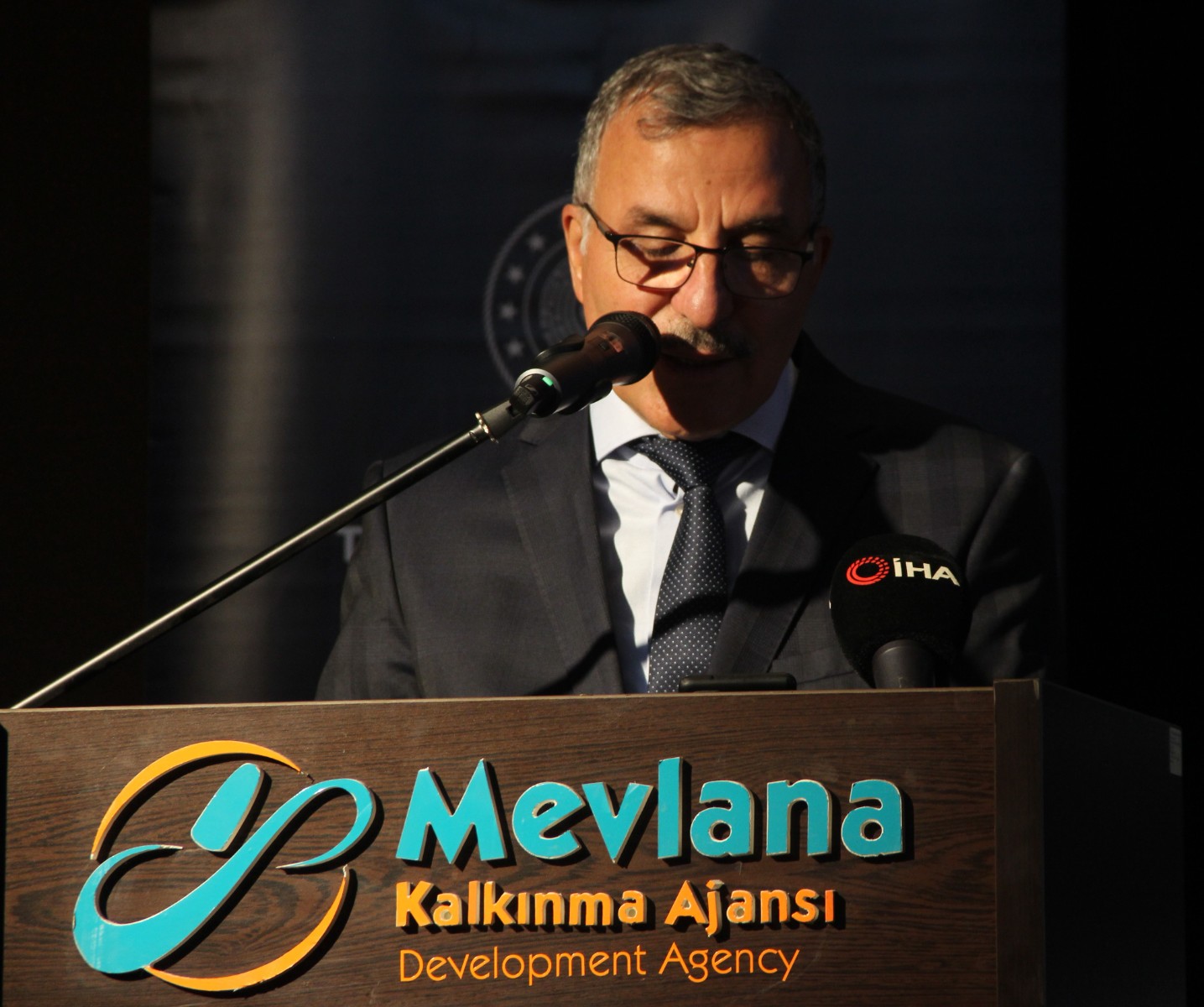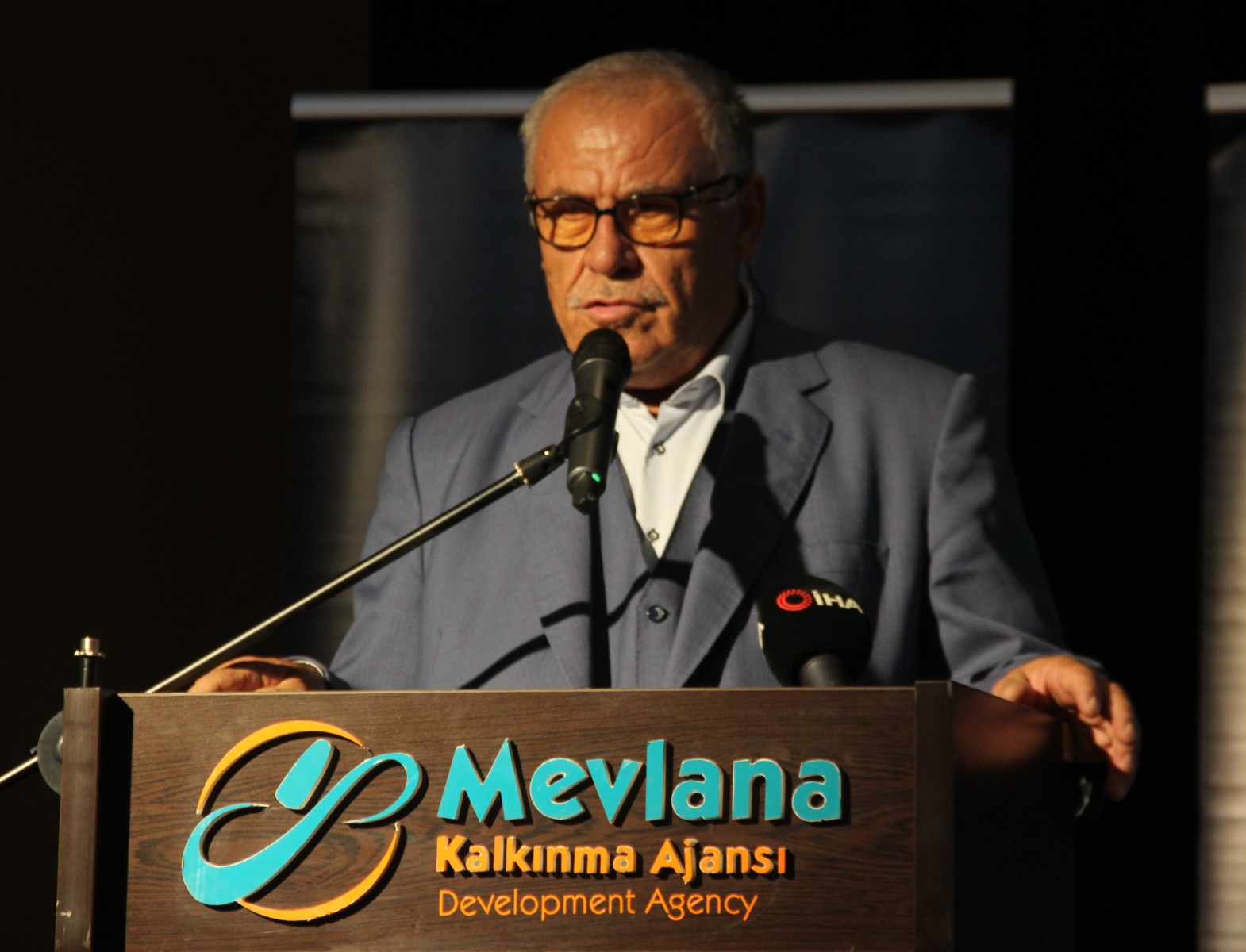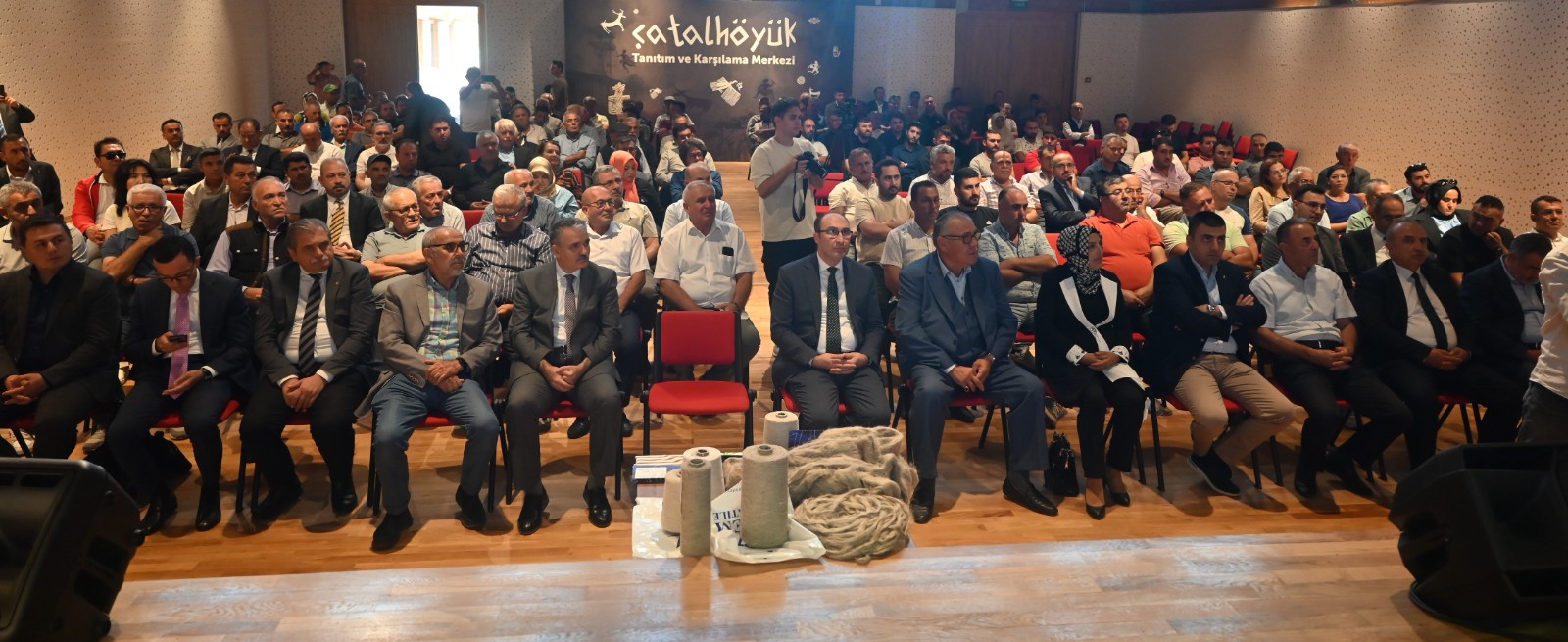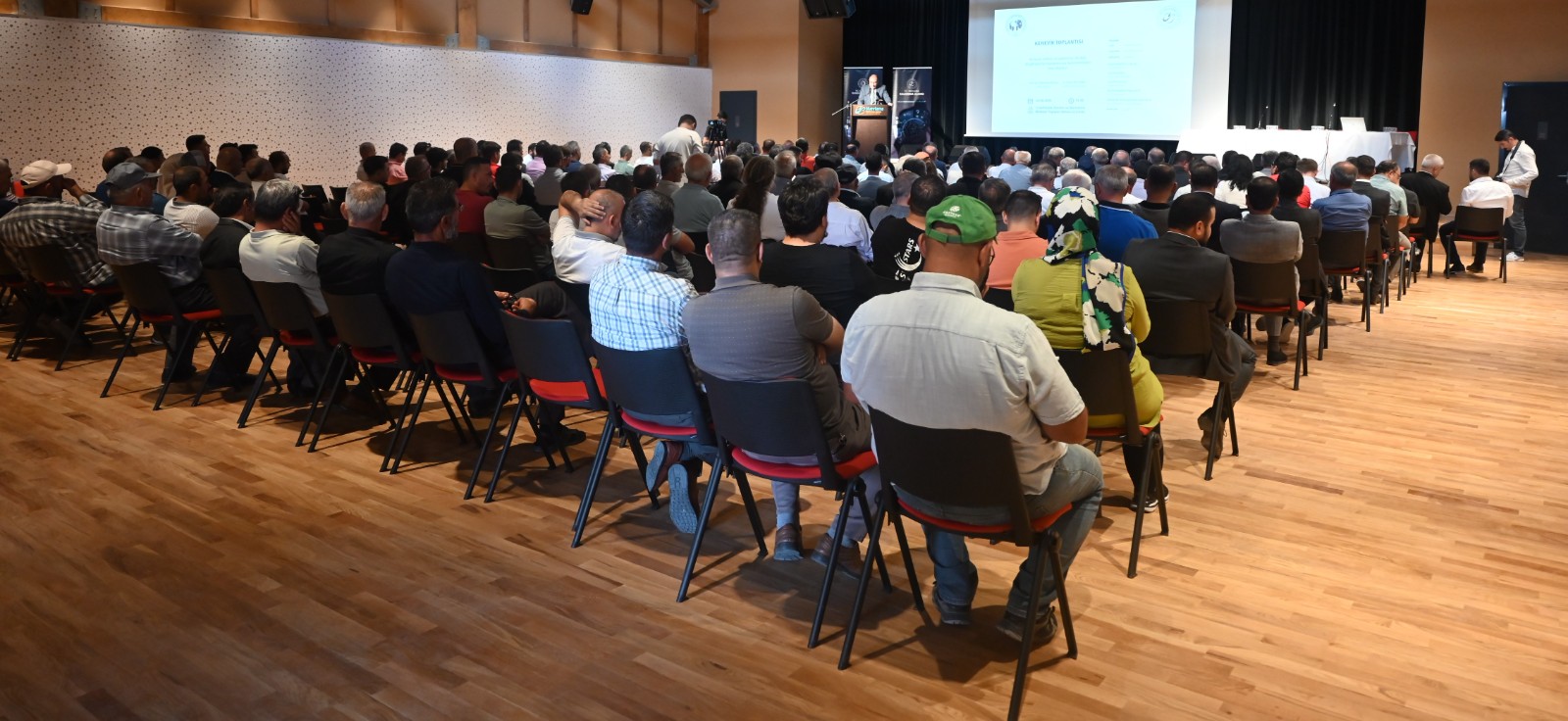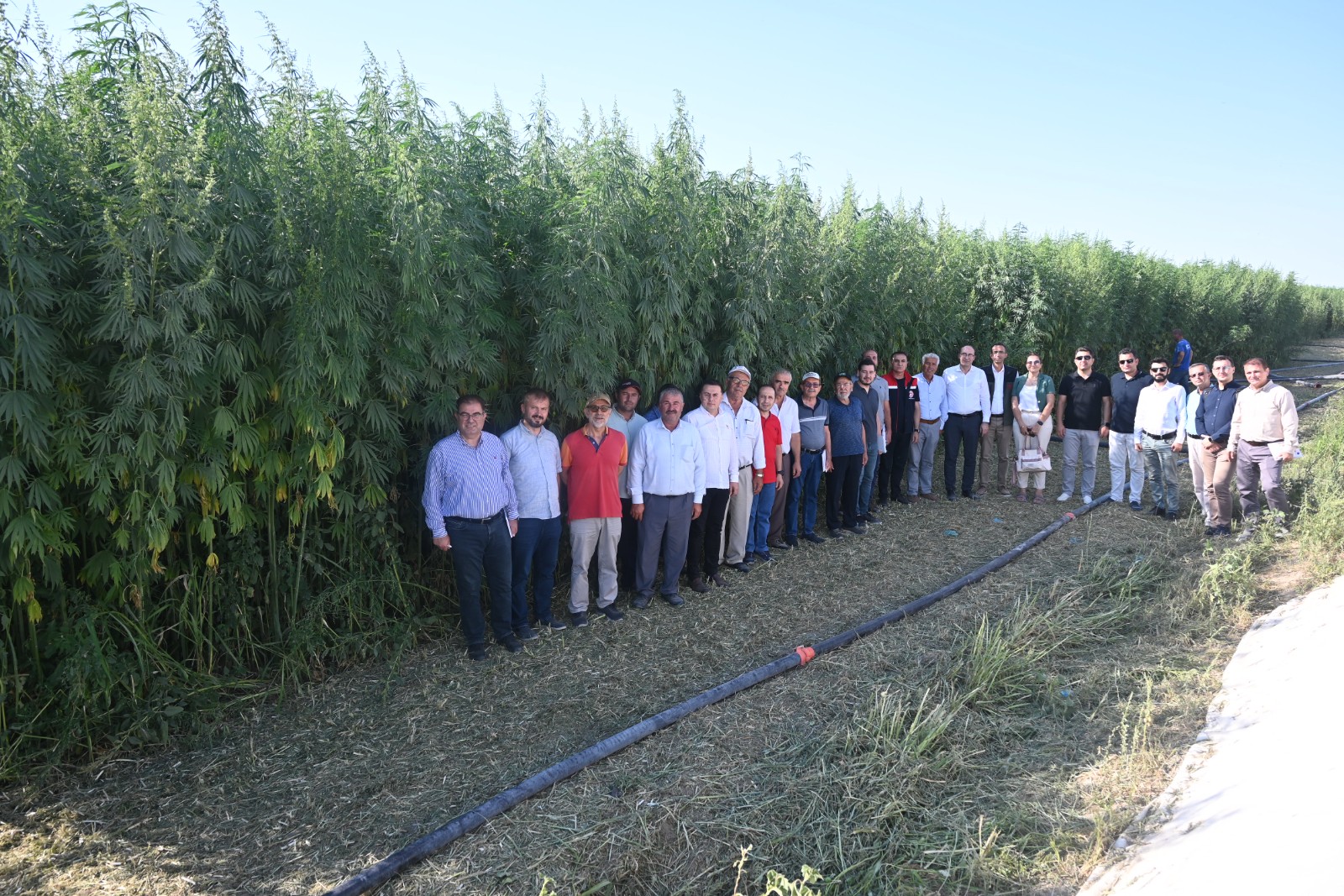"Hemp is a Strategic Product for Many Sectors, We Must Make It More Value-Added"
In cooperation with Mevlana Development Agency, which continues its work in the TR-52 Konya-Karaman Region under the coordination of the Ministry of Industry and Technology General Directorate of Development Agencies, Çumra Anadolu Production and Marketing Cooperative, and Karamanoğlu Mehmetbey Üniversitesi, a “Hemp Information Meeting” was organized.
AK Party Kastamonu MP Halil Uluay, Karamanoğlu Mehmetbey Üniversitesi Rector Prof. Dr. Mehmet Gavgalı, Mevlana Development Agency Secretary General Dr. İhsan Bostancı, Çumra Mayor Mehmet Aydın, Necmettin Erbakan Üniversitesi Vice Rector Prof. Dr. Hidayet Oğuz, Konya Provincial Director of Trade Mustafa Çağlayan, Karaman Provincial Director of Industry and Technology Bayram Güzel, representatives of public institutions, organizations, chambers, and commodity exchanges, as well as producers from Konya, Kayseri, İzmir, Kastamonu, and Kahramanmaraş, participated in the program held at Çatalhöyük Welcome and Promotion Center, implemented by Konya Metropolitan Municipality with the support of Mevlana Development Agency.
Delivering the opening speech of the program, Çumra Anadolu Production and Marketing Cooperative Chairman Mahmut Şenyüz said, “As Konya farmers, we continue our efforts within our cooperative to contribute to the agricultural production of our city and region and for our farmers to earn more income. At this point, we conducted a study with our Karamanoğlu Mehmetbey Üniversitesi regarding hemp, which has been produced in our country since ancient times and has recently come to the fore again, and we started to produce the hemp plant, whose production is subject to permission, in our Çumra district after obtaining the production permit. Hemp, which will be harvested in a very short time, has a wide range of uses. In the program organized today, we wanted to inform our farmers about this issue. We thank our Karamanoğlu Mehmetbey Üniversitesi and Mevlana Development Agency for organizing the meeting.”
Afterwards, Mevlana Development Agency Secretary General Dr. İhsan Bostancı said, “I would like to begin my words by expressing my pleasure to be with you today in Çatalhöyük, in our Çumra, the cradle of world agriculture, where people first transitioned from hunter-gatherer society to settled life, established their first cities, and first applied agricultural production techniques. In this meeting we organized, we will have the opportunity to get to know the hemp plant and its industrial use more closely, which we believe will increase its importance in the future of agriculture and industry, but I also want to share some information about Development Agencies. To summarize briefly, development agencies are development units with unique management and support mechanisms, outside of central and local administrations, bringing together public, private sector, and non-governmental organizations, and operating as supporters, coordinators, and catalysts. As Mevlana Development Agency, under the leadership of our board of directors and the coordination of the Ministry of Industry and Technology General Directorate of Development Agencies, we continue our efforts to guide the development of our region and contribute to this development process with both financial and technical support programs we implement for businesses, public institutions, and non-governmental organizations in our Konya-Karaman provinces, which are within our area of responsibility, as well as with plans and reports we prepare on various subjects. In this direction, approximately 3 Billion TL support at 2024 prices has been provided to 1519 financial and technical support projects by our Agency since our establishment, and an investment of 5.5 Billion TL has been mobilized in our region with co-financing. Looking at the hemp plant, which brought us together today and has the potential to be used in different sectors in the new era with its many features, we see that its production in Anatolia dates back to 1500 BC, and this production goes back to 7000 BC in the world. Again, it is known that until the mid-18th and 19th centuries, 80% of the textile fibers produced in the world consisted of linen and hemp, and there was a decline in this field starting from the 1930s. The cultivation of hemp, whose production and use areas date back to very ancient times, has decreased in the last 40-50 years and has almost reached the point of extinction. It is also a fact that the hemp policies of international policymakers have a significant share in this. Since the 2000s, Europe, in particular, has begun to rediscover hemp. The European Industrial Hemp Association, established in 2005, carries out studies for the planned cultivation, processing, and use of hemp from field to finished product, and for the development of policies and practices in this regard. With increasing interest, the total hemp cultivation area in the world has reached 8 Million decares, and approximately 350,000 decares of these cultivation areas, mostly located in China, Canada, and America, are in Europe. In our country, we see that hemp, which was produced in a very narrow area subject to permission for many years, has come to the fore again, especially in recent years, its cultivation is carried out on approximately 6,000 decares as of the current point, and studies have accelerated in some provinces such as Samsun, Kastamonu, Yozgat, and Kayseri. As is known, hemp cultivation is permitted in 20 provinces in our country, and Konya has been included in the scope of provinces permitted for “hemp production” as of 2024, and hemp cultivation has begun in Çumra district. Within the scope of certified seed development studies, we have two certified hemp seeds named “Vezir” and “Narlı” developed by our relevant institutes. Hemp, which can be used in very different sectors and areas, is produced for medicinal and cosmetic purposes in the USA, for construction purposes in Canada because its bricks, plaster, and cement are flexible, earthquake-resistant, breathable, antibacterial, have high heat insulation, and do not retain moisture, and in countries like France-China-Russia, it is used in the textile sector. In addition, the use of hemp, which can also be used as body parts, door interior panels, seats, and composite material in the automotive industry, in the paper industry, furniture sector, fertilizer, seed, and oil industries, is expanding day by day. In addition to all these, it is also seen that the hemp plant, which releases 25 times more oxygen and provides 4 times more carbon absorption than the same amount of trees, has many nature and environment-friendly features such as rejuvenating the soil and absorbing heavy metals. As I mentioned above, roadmaps for the short, medium, and long term need to be created for our region regarding hemp, which can be used as a raw material in many sectors such as textile, medicine, cosmetics, food, cellulose, feed, construction, automotive, etc., and whose cultivation has just begun in our province, industries that can be established based on hemp, and products that can be obtained from it, and this process needs to be realized with the contribution and guidance of all stakeholders. The task that falls to us as regional stakeholders here is to act together in industrializing hemp in a way that provides maximum benefit and in identifying new processing areas and transforming them into investments. Because hemp is a strategic product for many sectors, and we have to make this product more value-added. At this point, I want to re-emphasize that we attach great importance to the cooperation between our farmers-industrialists-universities and public institutions, and as an Agency, we are ready to do our best for these collaborations to increase and transform into added value in the upcoming period. We have full faith that this meeting we held with our Karamanoğlu Mehmetbey Üniversitesi and our cooperative, and the presentations to be made by our esteemed professors, who will open new horizons on this subject, will create great awareness about hemp. With these feelings and thoughts, I thank our Karamanoğlu Mehmetbey Üniversitesi and Çumra Anadolu Production and Marketing Cooperative for their valuable cooperation, our Konya Metropolitan Municipality for hosting us in this historical place, Prof. Dr. Fikret Akınerdem, Faculty Member of Karamanoğlu Mehmetbey Üniversitesi Faculty of Engineering, who put great effort and time into organizing our meeting, all our panelists, and you, our esteemed participants, for your participation, and I wish our program to be beneficial.”
Finally, Karamanoğlu Mehmetbey Üniversitesi Rector Prof. Dr. Mehmet Gavgalı, who took the podium, said, “Hemp, beyond being just an agricultural product, stands out as a versatile plant that can be used in many sectors such as health, textile, construction, and energy. Our university also continues its efforts to evaluate the potential of this strategic area in the best way and to contribute to both our region and our country. Today, here, we will collectively address the economic and social potential of hemp, investments that can be made in this field, and the challenges encountered. We aim to shed light on the future of the hemp sector by combining our academic knowledge with the experiences of our sector representatives. On this occasion, I thank you all for your participation and valuable contributions and wish for a productive meeting.”
Following the opening speeches, the presentations section, moderated by Prof. Dr. Fikret Akınerdem, Faculty Member of Karamanoğlu Mehmetbey Üniversitesi Faculty of Engineering, began. Speaking before the presentations, Prof. Dr. Fikret Akınerdem said, “Hemp is a product known, cultivated in Anatolia for centuries, and usable in many different fields. It has versatile uses that can help mitigate climate change, is compatible with nature in rural areas and the manufacturing industry, gives back more than it takes, and has recyclable properties. The input cost of hemp production is lower, and it has a positive impact on soil and biodiversity. Hemp is also a plant used in soil reclamation and, moreover, produces zero waste. In addition to these, hemp is the most suitable, most nature-friendly, fastest-produced, and most abundant source in terms of calorific values for biodiesel and biomass fuel production. In this sense, one of the studies on hemp is hemp as an energy crop. The usage areas of hemp are not limited to these; its use in many more sectors and areas such as textile, medicine, cosmetics, oil industry, paper industry, construction and building materials is expanding day by day. What is important here is to benefit from this product and to accelerate the research and studies initiated by official authorities and the private sector. At this point, today we will address the issue of hemp from both academic and private sector perspectives and examine our state's approaches at this point. Among both our participants and speakers today are our academics, private sector representatives, and ministry officials; the real owners of the business, our farmers, and producers are also here. I thank everyone who contributed to the organization of such a meaningful meeting,” and he made his presentation on “Hemp and Energy.”
Afterwards, respectively, Prof. Dr. Uğur Köklü, Faculty Member of Karamanoğlu Mehmetbey Üniversitesi Faculty of Engineering, on “Hemp and Composite Materials”; Dr. Merve Çelik Tolu, Faculty Member of Karamanoğlu Mehmetbey Üniversitesi Faculty of Engineering, on “Hemp Production in Konya”; Serkan Dölek from the Ministry of Agriculture and Forestry General Directorate of Crop Production on “Hemp Cultivation and Legal Legislation”; and Bayram Soydan, R&D Director of Konya Kâğıt San. ve Tic. A.Ş., informed the participants with their presentations on “Hemp Production and Konya Kağıt R&D Studies.”
The meeting concluded with a question-and-answer session, general evaluation, and exchange of ideas on hemp.


